E-commerce Question 2023 : How to avoid a race to the bottom?

In the dynamic world of eCommerce, where competition is fierce, particularly for Shopify Plus and BigCommerce stores, the online marketplace is an ever-evolving arena where success is not guaranteed.
In this article, we'll explore the vital role that strategic pricing plays in combating the "Race to the Bottom" and how it can empower you to rise above the e-commerce competition.
The Perils of the Race to the Bottom
According to Statista, the e-commerce market is on a trajectory of substantial growth, with projected revenues reaching US$2,928.00 billion in 2023 and an anticipated annual growth rate of 9.94% from 2023 to 2028.

This growth trajectory will result in a significant market volume of US$4,703.00 billion by 2028.
The United States is a key player in this market, with a projected revenue of US$887.50 billion in 2023.
Global Comparison

The user base in the eCommerce market is also set to expand, reaching 3,701.0 million users by 2028. User penetration is forecasted to be 43.1% in 2023, with an expected increase to 52.5% by 2028. Furthermore, the average revenue per user (ARPU) is projected to be US$1.17k. These statistics underscore the dynamic and expansive nature of the eCommerce sector, indicating both significant revenue potential and a growing user base.
The Race to the Bottom: What Is It?
A fierce competition where Shopify Plus and BigCommerce stores continuously lower their prices to attract consumers. This can initially boost sales but often leads to reduced profits, lower product quality, and a damaged brand reputation.
Megan Winter, from Unstoppable, says, "When you compete on price, it’s a very fast race to the bottom. Bargain Hunters are Only Loyal to Price. If someone bought from you due to your low prices, they’re likely to buy from someone else, the minute they find a cheaper alternative. As soon as there is a cheaper option, you lose that customer. And, in the world of eCommerce, there will always be a cheaper option. Another fundamental reason we don’t compete on price is human psychology. "You get what you pay for" has been so deeply ingrained in our psyche that if it’s cheap we expect it to be nasty."
To counter this, e-commerce must focus on strategic pricing and value-added services to maintain profitability and competitiveness.
Eroding Profitability and Brand Value
"In e-commerce, your prices have to be better because the consumer has to take a leap of faith in your product," said Ashton Kutcher.
Constant price undercutting is the primary weapon in this race. While it might seem like a quick way to gain consumers, it can erode profitability and brand value. Price wars often result in reduced profits, making investing in quality and innovation challenging. Furthermore, the perceived value of your products may decline, potentially tarnishing your brand's reputation.
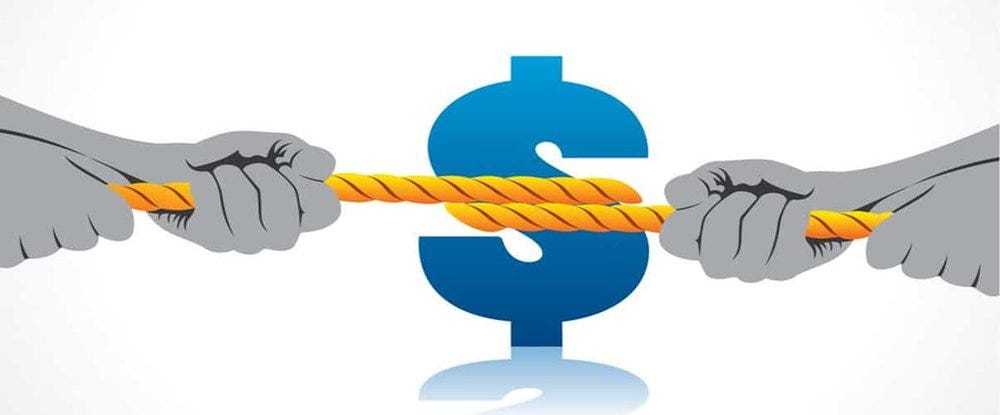
Pros of Price Wars:
- Consumers save money.
- Consumers may receive additional products or services.
- E-commerce gains new consumers.
Cons of Price Wars:
- E-commerce loses market share and profits.
- Less competition can result in reduced consumer choice and higher prices.
- Challenging to invest in quality and innovation
E-commerce Key players

Several factors drive the "race to the bottom" phenomenon in e-commerce:
1. Intense Competition
The e-commerce sector is characterized by fierce competition, where numerous sellers offer similar or identical products. The global e-commerce landscape comprises over 26.5 million websites, which grows steadily, with new sites emerging daily. There has been a substantial increase in the total number of global eCommerce sites from 2019 to 2023, rising from 9.2 million to 26.5 million. This shows the rapidly expanding nature of the global digital economy. This dynamic puts pressure on businesses to lower prices to attract price-sensitive consumers. For example:
Amazon employs different promotions like "Deal of the Day," " Black Friday Deal," etc., to attract price-sensitive online shoppers by offering heavily discounted products for a limited time. This strategy leverages a sense of urgency, encouraging consumers to make prompt purchases. The approach highlights cost savings and limited availability, effectively appealing to the price sensitivity of the target audience.
2. Price Transparency

Pertains to the ready accessibility of information about the prices of products and services. Such as
- Detailed Price Breakdown: Inform consumers about all factors contributing to the final price, including manufacturing, distribution, labor, shipping, import duties, and VAT.
- Price History Display: Demonstrates how the price has changed over time, incorporating one-time discounts, offers, and adjustments to the Recommended Retail Price (RRP).
- Market Price Comparison: Like the PriceMole Price Comparison Widget, offers a live view of prices across various channels, enabling consumers to make informed decisions about where to purchase.
- Transparency on Hidden Costs: Ensuring there are no surprise costs during the checkout process, and keeping consumers aware of the total price throughout the transaction.
- Explanation of Price Changes: Providing reasons and data behind any price adjustments, whether an increase or decrease, as a potential marketing tactic to build customer trust and loyalty and boost sales.
- Compliance with regulations: Means adhering to regulatory standards, such as the EU's Price Indication Directive (PID), which clearly states previous prices when implementing reductions. This enhances consumer protection and awareness of a product's pricing history.
Price Transparency is crucial for both consumers and e-commerce. Consumers gain the ability to make informed decisions, and businesses face the challenge of balancing competitiveness with profitability. This shift in pricing strategies due to price transparency poses challenges for Shopify Plus and BigCommerce stores, requiring them to maintain profitability while proactively sharing pricing information.
3. Globalization

Enables e-commerce to reach a global audience but also exposes them to competition from international sellers. Companies may reduce prices to stay competitive worldwide, especially for products easily comparable and shipped internationally.
Advantages of International E-commerce:
- Easier Market Expansion: Simplified entry into foreign markets.
- Improved Product-Market Fit: Enhanced ability to find a suitable match between products and international markets.
- Shortened B2B Sales Cycles:Accelerated business-to-business sales processes.
- Rapid International Presence: Faster establishment of a global business footprint.
- Reduced Barriers to Entry:Lower obstacles to entering international markets.
4. Consumer Expectations and Experience
This significantly influences the purchasing decisions of consumers, around 76%. Shopify Plus and BigCommerce shoppers often prioritize quality and affordability when making purchasing decisions.
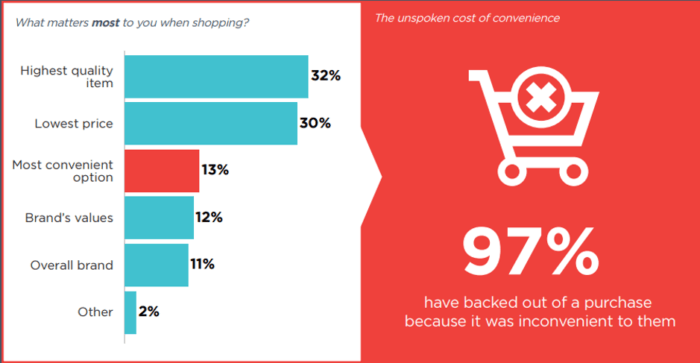
Consequently, e-commerce may feel compelled to lower prices to meet consumer expectations and stay competitive.
5. Thin Profit Margins
Certain e-commerce enterprises operate with slim profit margins. As per Shopify, the typical profit margin in e-commerce stands at 10%. A profit margin of approximately 20% is considered high, whereas 5% is generally deemed low, making it challenging to sustain profitability without achieving a high sales volume. This situation often leads to a concentration on cost-cutting and implementing strategies to reduce prices.
Check out the average profit margin for your industry.
Overall, successful engagement with Shopify Plus and BigCommerce shoppers involves a combination of Competitive Pricing, Price Transparency, Personalization, and the Utilization of Consumer Expectations. Implementing these strategies enables e-commerce companies to resonate with cost-conscious consumers and boost online sales.
Challenging Misconceptions
Have you ever wondered what would happen if both you and your competitor used an automated repricing software like PriceMole to undercut each other by $1? Does it lead to an endless price drop, eroding margins, or is there a built-in safeguard to prevent such a race to the bottom?"
We often hear this concern: If all companies in the industry used the same dynamic pricing software, wouldn’t that result in a race to the bottom? Fortunately, this is not the case, and races to the bottom are very rare in our experience.
Using intelligent dynamic pricing strategies like PriceMole is actually a great way to avoid this. Since both the commercial strategy as well as the input variables (e.g. purchase price, inventory, goal margins, competitors) vary per company, there is a small chance of ending up in a race to the bottom.
Intelligent dynamic pricing with a variety of strategies actually enables stores to avoid the race to the bottom. Another thing to keep in mind is that prices always fluctuate due to changing market conditions, prices may go down for a while, but they always come back up again.
Based on our experience:
- Our partners do not want to be the cheapest across the entire catalog, as this is not the most profitable way to employ automated strategies.
- Using a combination of strategies, including beating cheapest with best seller items, to gain buyer confidence, and a variety of pricing optimization/ average pricing with psychological price influence on surrounding items boosts revenue on sales. *It may take a bit of time to learn which products best fit which strategy.
- This includes a minimum margin on strategies by adding cost + markup amount to account for revenue goals, ensuring some profitability even on the products with lower margins. Then, if you decide a group of products should have a higher or lower margin, as it is selling well or not well, this can be updated.
A common misunderstanding about automated repricing suggests it results in a "race to the bottom," where BigCommerce and Shopify Plus continuously reduce prices to surpass competitors.
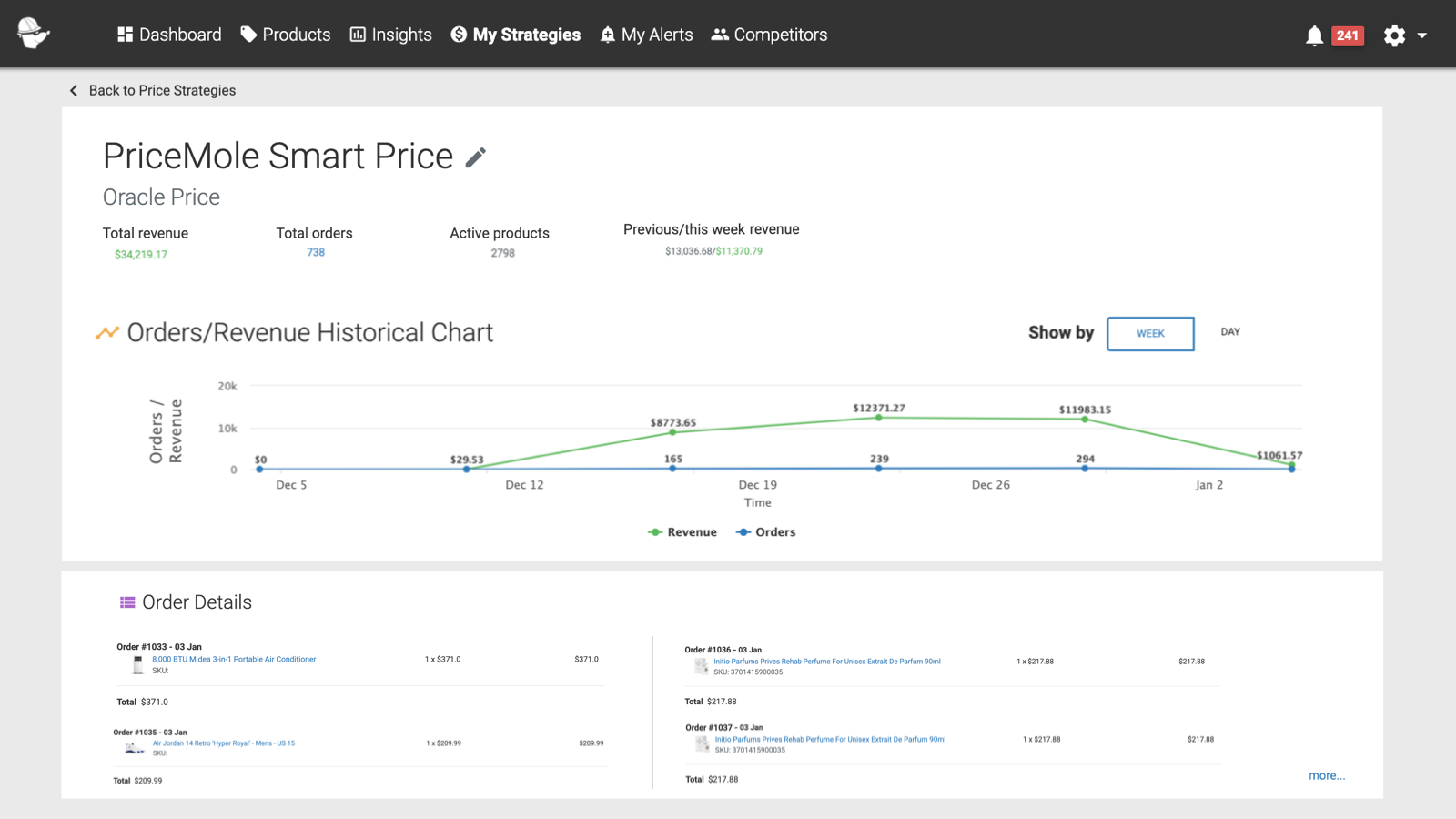
Contrarily, sophisticated automation tools take into account your pricing strategy and profit margins. With Pricemole Dynamic Pricing, especially with PriceMole Oracle/Smart Price, you can determine the optimal price to attract customers while maintaining profitability.
Unleashing the Power of Competitor Monitoring and Automated Repricing Strategies
Competitor Price Tracking: Staying Ahead

To combat the "Race to the Bottom," you must stay one step ahead. Competitor price tracking is the key. By monitoring your competitors in real-time, you gain insights that help you stay competitive and make informed decisions.
Uncovering Market Trends and Competitor Movements
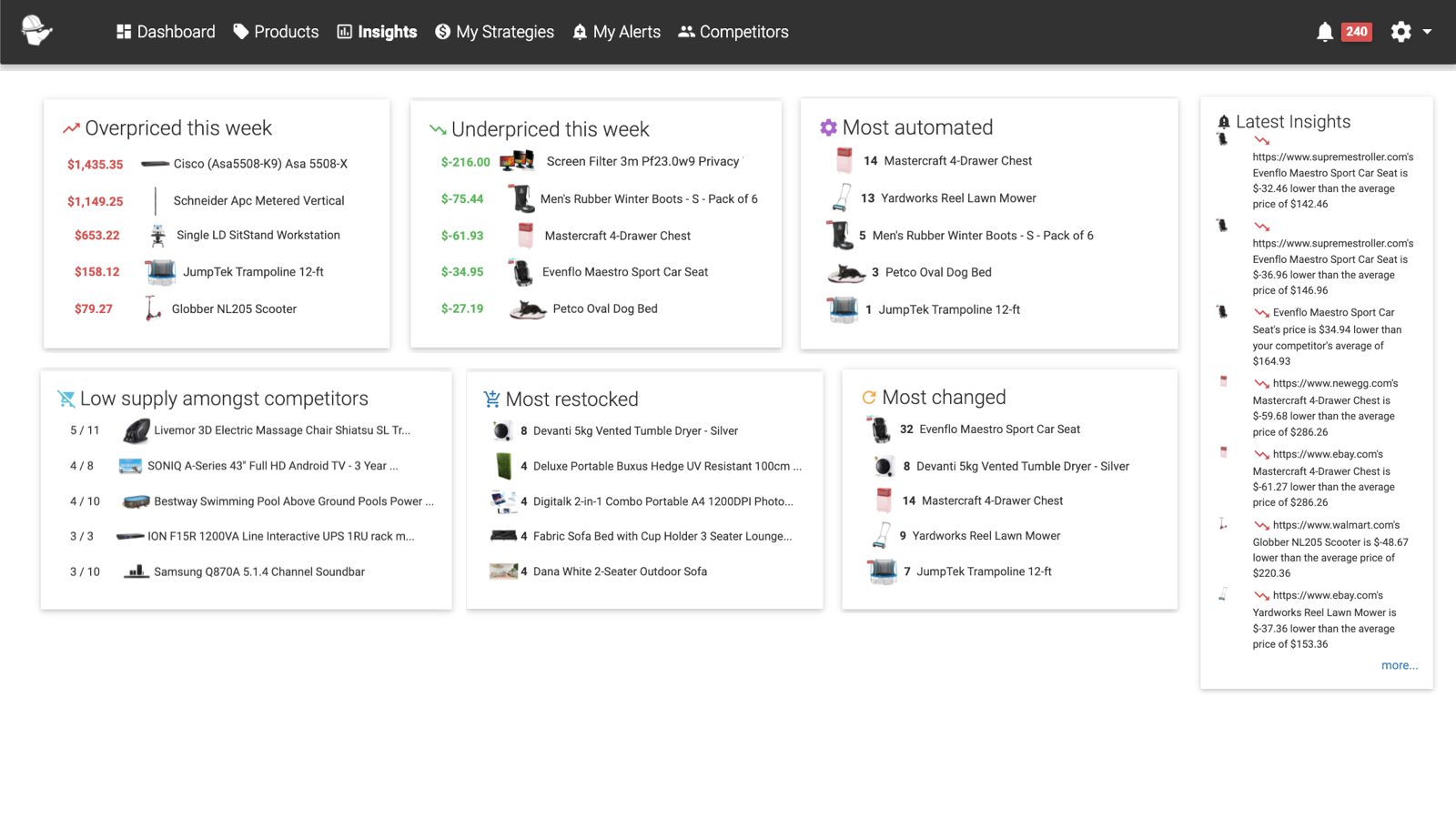
Real-time monitoring allows you to uncover market trends and track your competitors' pricing strategies. PriceMole Competitor Insights empowers you to adapt swiftly, ensuring your prices remain attractive and your profit margins are healthy.
Creating Targeted Pricing Strategies

Being informed about your competitors' moves is a game-changer. It enables you to create targeted pricing strategies that take into account the market dynamics and your competitors' actions.
Automated Repricing: Your Competitive Edge
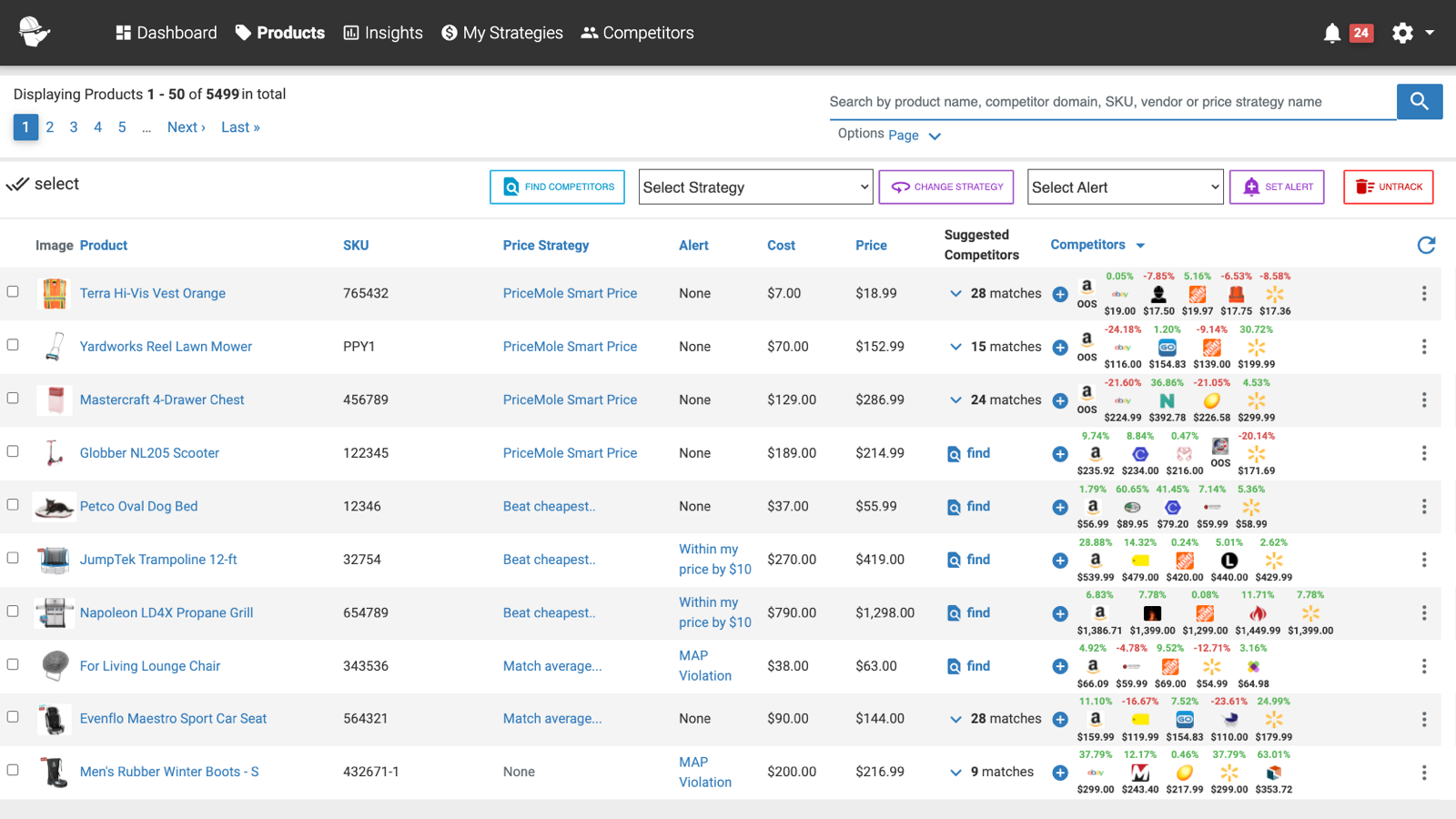
In the age of automation, manual price adjustments are no longer sustainable. PriceMolle Automated Repricing is the solution. This technology plays a pivotal role in maintaining optimal prices, all without the need for constant manual intervention.
Diverse Repricing Strategies

There are various automated repricing strategies available, each with its unique advantages. These include rule-based, dynamic, and algorithmic repricing. The focus here is on dynamic repricing due to its flexibility in adapting to market shifts and competition.
Elevate Sales and Productivity: BigCommerce and Shopify Plus Edition
Harnessing Automated Repricing for Success

For BigCommerce and Shopify Plus store owners, automated repricing tool like PriceMole is a game-changer. PriceMole can dynamically adjust prices in real time, ensuring constant competitiveness. This swift response is crucial in a market characterized by rapid changes in trends and prices. Automation simplifies the repricing procedure, enabling you to concentrate on other critical aspects of your store while ensuring your prices consistently match market dynamics. Automated repricing provides a substantial competitive advantage, allowing you to respond faster to market changes than your competitors, establishing your store as a preferred option for price-conscious consumers.
Enhancing Sales Potential and Profit Margins

PriceMole Dynamic Pricing is designed to optimize your sales potential by ensuring your prices stay competitive. This powerful tool achieves a delicate equilibrium, attracting consumers while safeguarding healthy profit margins. In essence, it strikes the perfect balance, allowing you to remain appealing to customers without compromising your bottom line.
So, how do you survive the race to the bottom?
Surviving the "race to the bottom" in e-commerce requires strategic planning and differentiation to go beyond competing solely on price. Here are some strategies that businesses can adopt:
- Differentiate Your Brand: Focus on what sets your brand apart from the competition. This could be unique product features, superior quality, exceptional customer service, or a strong brand identity. Communicate these differentiators to your target audience.
- Value-Added Services: Provide additional services or features that enhance the overall customer experience. This could include free shipping, extended warranties, loyalty programs, or personalized customer support.
- Build a Strong Online Presence: Invest in a user-friendly and visually appealing website. Utilize social media, content marketing, and search engine optimization (SEO) to increase your online visibility. A solid online presence can attract consumers beyond just price considerations.
- Focus on Customer Serviceb: Exceptional customer service can be a powerful differentiator. Respond promptly to customer inquiries, address issues effectively, and create a positive overall shopping experience. Satisfied consumers are more likely to become repeat consumers and recommend your brand.
- Bundle Products: Create bundled packages or product bundles that offer better value than individual items purchased separately. This strategy can incentivize consumers to choose your brand over competitors.
- Emphasize Quality over Quantity: Instead of competing on price alone, highlight the quality and durability of your products. Educate consumers about the value they receive by choosing your higher-quality items.
- Target Niche Markets: Identify and cater to niche markets where specific needs or preferences are not adequately addressed by mass-market competitors. This can reduce direct competition and allow for more focused marketing efforts.
- Monitor Costs and Efficiency: Efficient operations can help maintain profitability even in a competitive market. Continuously evaluate and optimize your supply chain, production processes, and overhead costs to ensure competitiveness without compromising quality.
- Customer Loyalty Programs: Implement loyalty programs that reward repeat consumers. This encourages customer retention and can lead to positive word-of-mouth marketing.
- Most importantly, Strategic Partnership: Explore collaboration with PriceMole Automation to enhance your industry presence. Forming a partnership with PriceMole can provide synergies, allowing you to optimize operations and strengthen your store positioning.
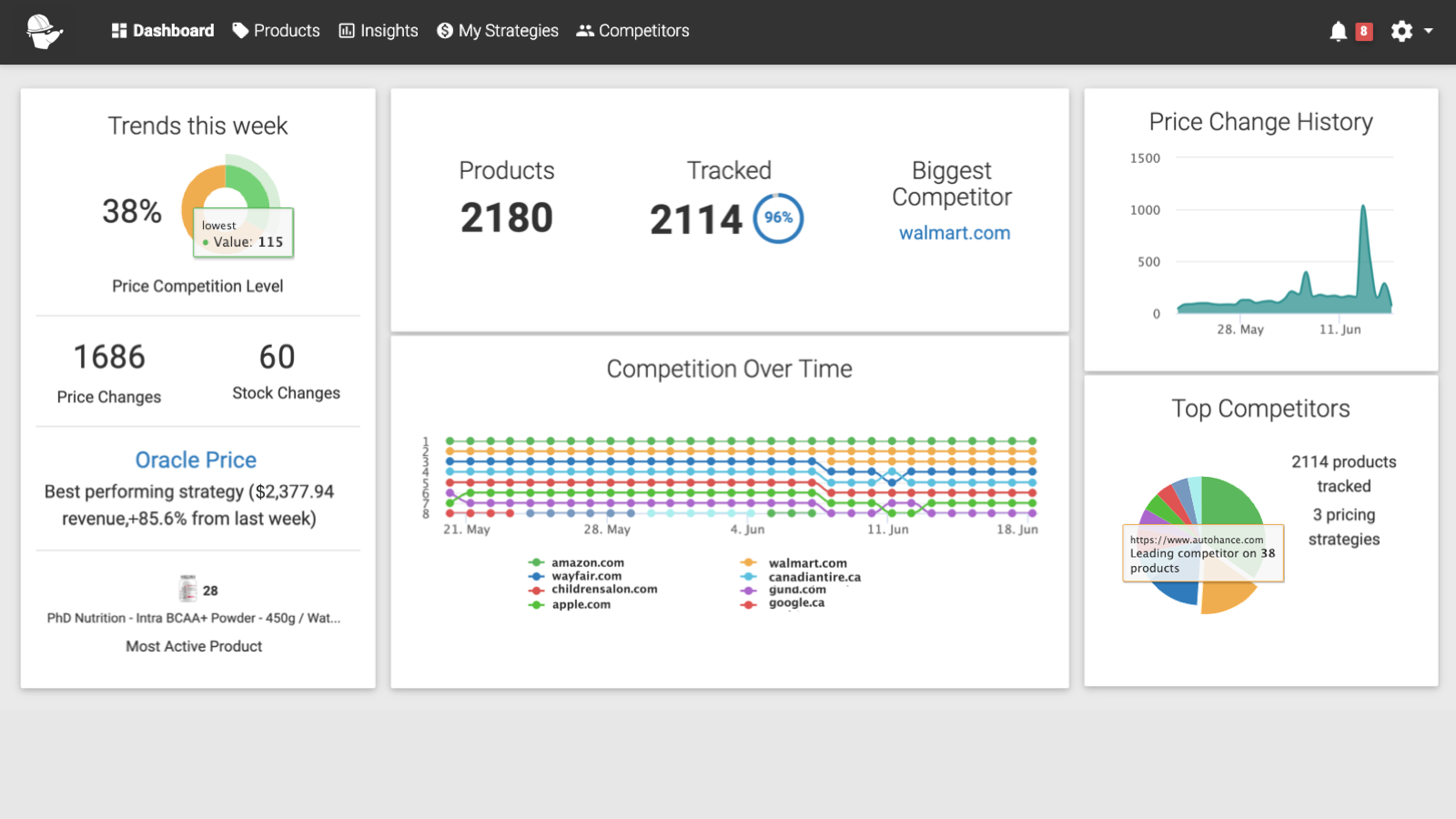
Summary
In the fiercely competitive world of eCommerce, strategic pricing is your lifeline. The "Race to the Bottom" may be a difficult path, but with competitor price tracking and automated repricing strategies, you can rise above the crowd. Embrace innovation, secure your competitive edge, and achieve sustainable growth by mastering the art of strategic pricing. Your success in the eCommerce landscape is within reach, and it starts with your pricing strategies.
Do you have questions, insights, or valuable perspectives to share? Don't hesitate to Contact us!. Check out our Website, Shopify, BigCommerce, Facebook, Twitter, and LinkedIn. We are dedicated to ensuring your success and highly value your feedback!